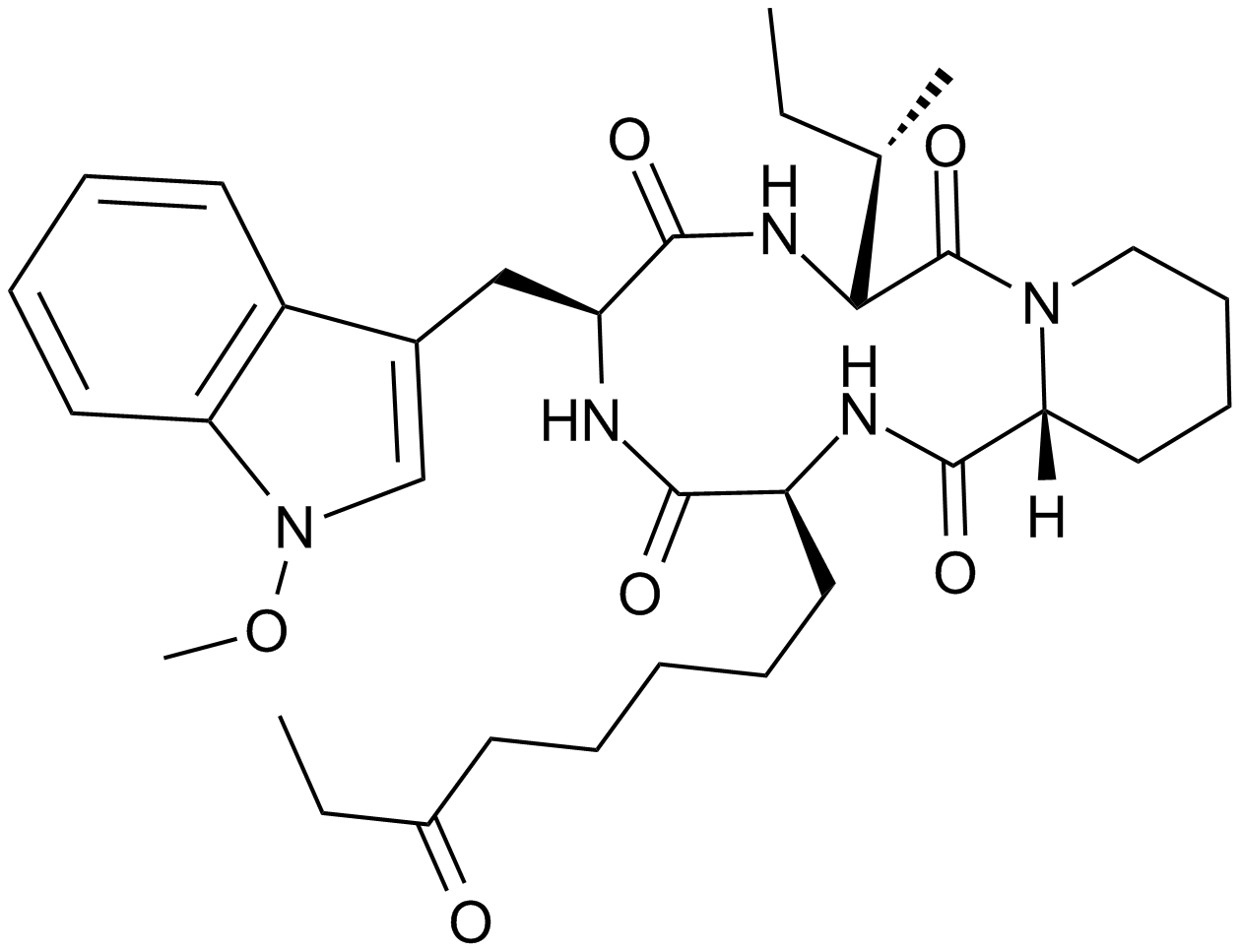Apicidin (Synonyms: OSI 2040) |
| Catalog No.GC12961 |
A cell-permeable HDAC inhibitor
Products are for research use only. Not for human use. We do not sell to patients.

Cas No.: 183506-66-3
Sample solution is provided at 25 µL, 10mM.
Histone acetyltransferase and histone deacetylase (HDAC) activity regulates the reversible acetylation of lysine residues within histone tails, which results in either transcriptional activation or repression of nearby genes. Compounds that modulate this activity are of interest in cancer chemotherapeutics as well as for treating psychiatric disorders, malaria, and other diseases. Apicidin is a fungal toxin that has broad spectrum activity against Apicomplexan parasites through inhibiting HDACs (IC50 = 0.7 nM).[1] An in vitro activity assay demonstrates apicidin inhibition of HDAC3/NCoR, a class I HDAC, at a much higher potency than for class II HDAC6 (IC50s = 15.8 and 665.1 nM, respectively).[2] Apicidin exhibits antiproliferative activity against various cancer cell lines (IC50s = 0.13-2.36 μM), and at 0.5 – 2 μM it induces selective changes in p21WAF1/Cip1 and gelsolin gene expression, which control cell cycle and cell morphology, respectively.[3]
Reference:
[1]. Darkin-Rattray, S.J., Gurnett, A.M., Myers, R.W., et al. Apicidin: A novel antiprotozoal agent that inhibits parasite histone deacetylase. Proceedings of the National Academy of Sciences of the United States of America 93(23), 13143-13147 (1996).
[2]. Mazitschek, R., Patel, V., Wirth, D.F., et al. Development of a fluorescence polarization based assay for histone deacetylase ligand discovery. Bioorg. Med. Chem. Lett. 18(9), 2809-2812 (2008).
[3]. Han, J.W., Ahn, S.H., Park, S.H., et al. Apicidin, a histone deacetylase inhibitor, inhibits proliferation of tumor cells via induction of p21WAF1/Cip1 and gelsolin. Cancer Research 60, 6068-6074 (2000).
Average Rating: 5 (Based on Reviews and 30 reference(s) in Google Scholar.)
GLPBIO products are for RESEARCH USE ONLY. Please make sure your review or question is research based.
Required fields are marked with *




